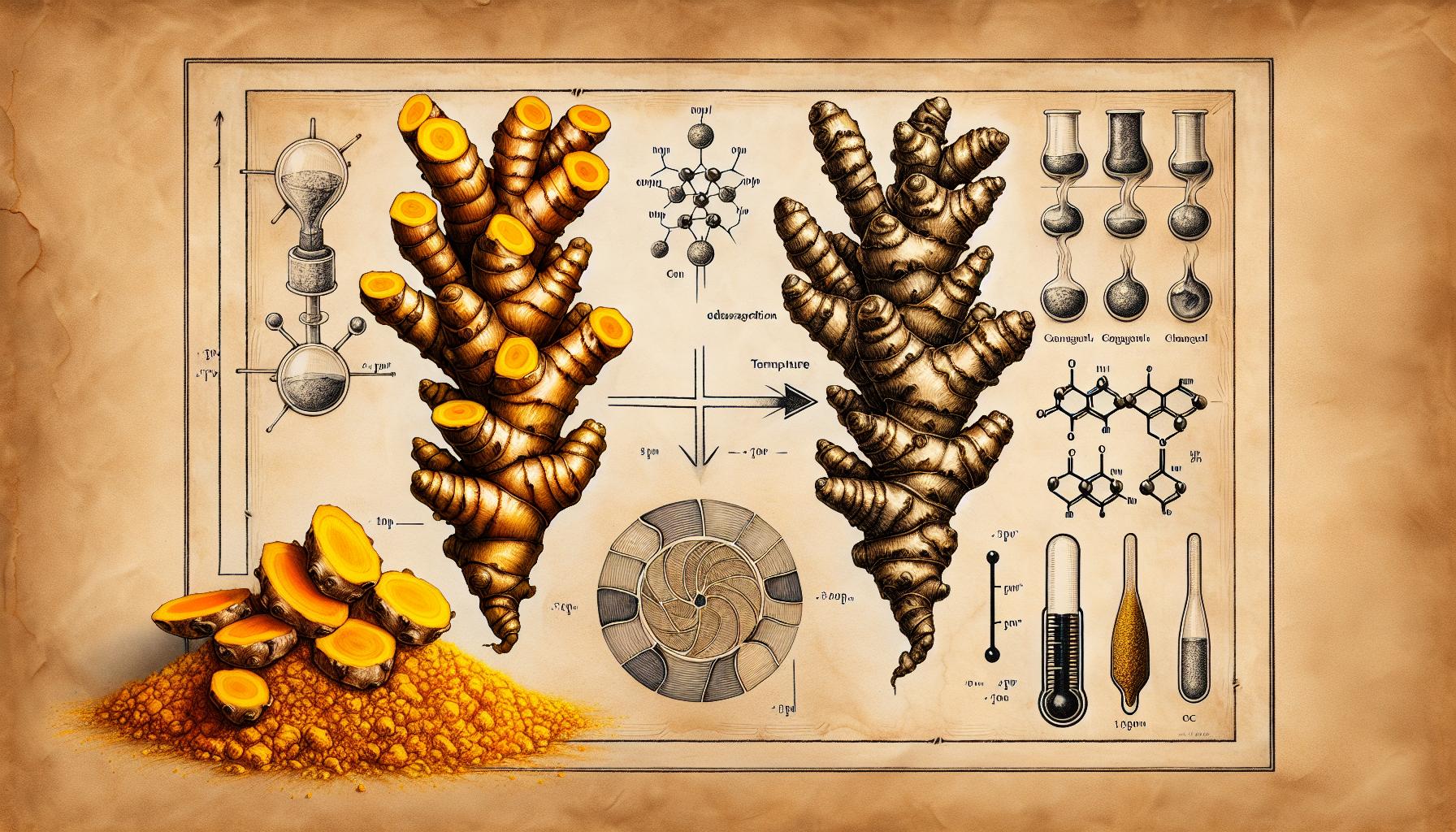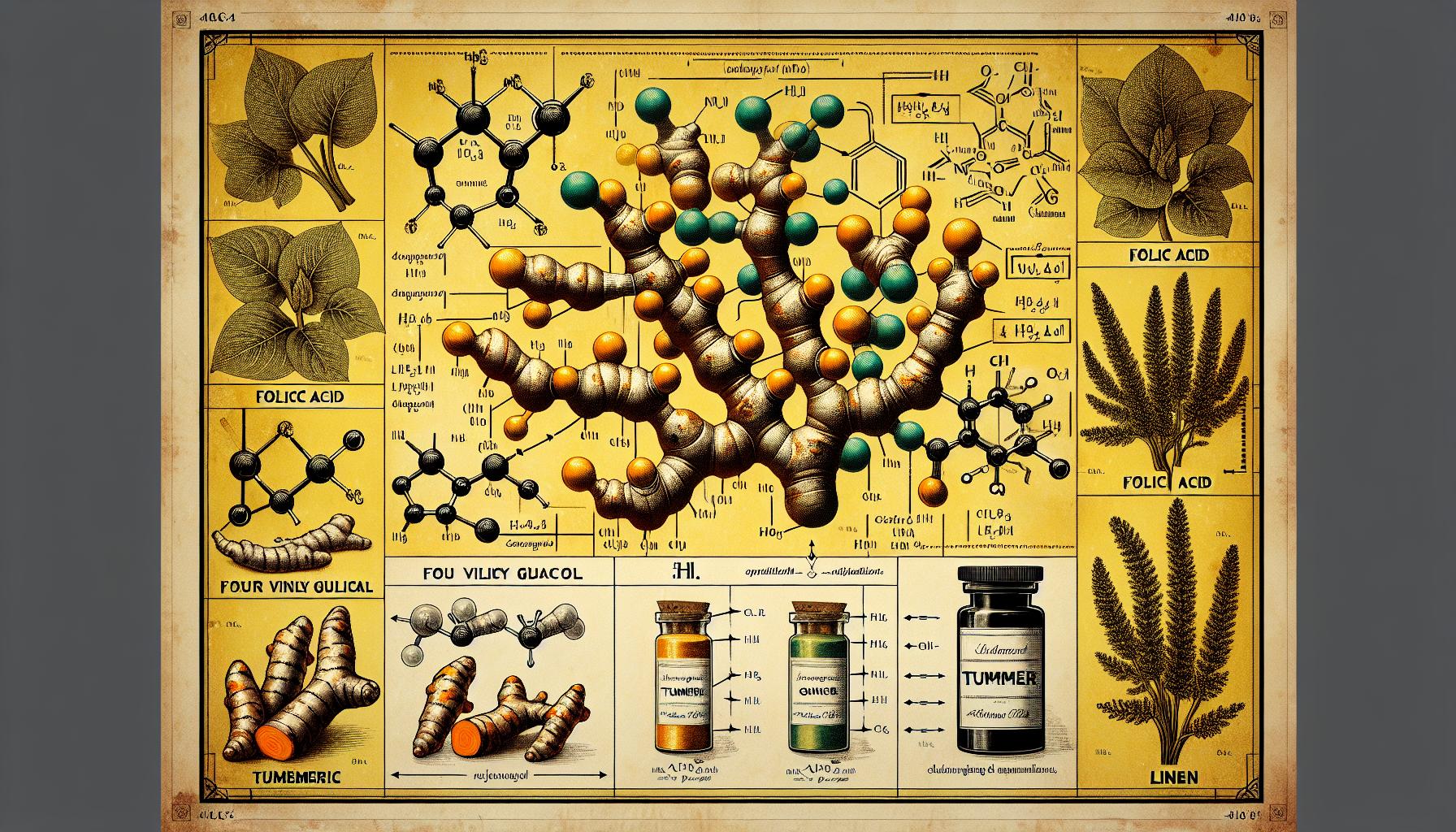Welcome spice enthusiasts, health nuts, and curious culinary minds to our blog! Today, we’re stirring up a hot topic pulled straight from a riveting YouTube video-“Spicing Up Health: the Sizzling Benefits of Cooked Turmeric”. If you’ve been closely following health trends, the golden wonder spice-turmeric, has probably caught your eye. Its health benefits are plentiful and potent, particularly with regards to inflammation. However, there has been a lingering worry; does heating this precious spice nullify its nutritive power? Ironically, it appears that heat may actually enhance certain functions. Let’s dive headfirst into this heated debate, unearthing the facts about the transformative impact of heat on Turmeric phytonutrients, a subject hotly discussed in this video. From antioxidant capacity to surviving extreme temperatures, grab your apron and let’s spice up your health knowledge!
Table of Contents
- Bursting the Myth: How Heat Enhances Turmeric’s Superpowers
- Unraveling the Science: Thermal Degradation Impact on Turmeric
- Key players in Turmeric: Spotlight on Folic Acid, Four Vinyl Guaiacol and Linen
- Health on a Plate: The Dietary Gains of Cooking with Turmeric
- Q&A
- Key Takeaways
Bursting the Myth: How Heat Enhances Turmeric’s Superpowers

Despite often being regarded as a ‘kitchen myth’, heat actually intensifies the miraculous qualities of turmeric, that many have been known to overlook. Contrary to common belief, heat does not obliterate the phytonutrients in this valued herb; on the contrary, it seems to provide a surprising enhancement. This fact stands in spite of heat’s known propensity to destroy enzymes, so the trick with turmeric, it seems, is that the heating process result in enhanced and amplified phytonutrients, further consolidating turmeric’s place as a health-boosting superfood.
Cooking with turmeric offers rewards far more than the taste and color. Studies have indicated that preparing your turmeric by subjecting it to 356 degrees Fahrenheit (180 Centigrade) for 70 minutes results in the enhancement of three powerful antioxidants. The first, Ferulic Acid, is an antioxidant that secures the skin and acts against sun damage. Next, we have 4-Vinyl Guaiacol, which activates Nrf2 mechanism in our body, playing a significant role in decreasing cellular stress and bolstering the antioxidant defense mechanism. Finally, Vanillin, a compound found in vanilla, acts as a powerful antioxidant, providing both anti-inflammatory and anti-microbial effects. The enhanced concentration of these phytonutrients, facilitated by the process of thermal degradation, suggests that far from inhibiting the benefits of these antioxidants, heat actually amplifies their concentration, resulting in a significantly higher solubility.
| Antioxidant | Benefits |
|---|---|
| Ferulic Acid | Protects the skin, counters sun damage |
| 4-Vinyl Guaiacol | Decreases cellular stress, enhances antioxidant defense mechanism |
| Vanillin | Acts as a powerful antioxidant, provides anti-inflammatory and anti-microbial effects |
So, when you next feel tempted to add a sprinkle of turmeric to your foods, or include it in your preferred beverage, remember not to be too worried about cooking it. Use heat to your advantage, and let it help to unlock turmeric’s true potential.
Unraveling the Science: Thermal Degradation Impact on Turmeric

Contrary to popular belief, heating turmeric doesn’t ruin its nutritional benefits, but rather enhances them. This quite surprising fact stems from a term known as thermal degradation, a process that increases the concentration and solubility of certain phytonutrients in this aromatic spice. Particularly, heat brings out three vital antioxidants in turmeric, namely ferulic acid, 4-Vinyl guaiacol and vanillin, thereby doubling the health benefits obtained when consuming it.
Here are the key highlights of these compounds:
- Ferulic Acid: This potent antioxidant is beneficial for skin health by protecting the skin and counteracting the effects of sun damage. Its concentration supposedly increases with heat.
- 4-Vinyl Guaiacol: Heating turmeric allows this compound to shine. It spruces up something named Nrf2 that hinders cellular stress and bolsters an antioxidant defense mechanism in the body, leading to an enhanced immune system and controlled inflammation.
- Vanillin: The compound notoriously found in vanilla also resides in turmeric and is yet another powerful antioxidant. When heat is infused, it amplifies its anti-inflammatory, anti-microbial properties, and it is even used as a food preservative.
These health advantages were observed in a study where roasting, boiling, and cooking turmeric at 180 degrees Celsius, or 356 degrees Fahrenheit, for 70 minutes didn’t deter its antioxidant capacities. Hence, the next time you cook or use turmeric in your foods, you don’t need to worry about the minor detail of cooking it.
Key players in Turmeric: Spotlight on Folic Acid, Four Vinyl Guaiacol and Linen

A common apprehension about turmeric is the misconception that heating it during food preparation will destroy its valuable phytonutrients. Instead, heating or cooking turmeric does not have an adverse effect, instead it seems to enhance specific phytonutrients. The term dubbed for this enlightening outcome is thermal degradation.
A study on the effect of heat treatment on turmeric shows that Folic Acid, Four Vinyl Guaiacol (4VG), and Linen – the three significant antioxidants in turmeric fare surprisingly well even when treated at 356 degrees Fahrenheit for 70 minutes. They stand up to extreme temperatures and even get considerably enhanced. Specially:
| Antioxidant | Impact |
|---|---|
| Folic Acid | It is excellent for skin health and provides protection against sun damage. |
| 4-Vinyl Guaiacol | It boosts a protein called Nrf2 in the body that aids in reducing cellular stress and enhancing the body’s antioxidant defense mechanism, which in turn fortifies the immune system and mitigates inflammation. |
| Linen | Found in vanilla, it acts as a powerful antioxidant, possesses anti-inflammatory properties, and also serves as an anti-microbial. It’s even used as a preservative! |
So, whether you’re thinking about a tumeric-enhanced tea, a vegan curry or a spice-infused supplement, don’t hold back on using this delicious, health-boosting herb, even if that involves heating it!
Health on a Plate: The Dietary Gains of Cooking with Turmeric

Debunking The Myth About Heating Turmeric
Contrary to popular belief, heating turmeric does not destroy its nutrition. In fact, it’s quite the opposite. Cooking this spice can actually enhance some of its phytonutrients. This conclusion is based on a couple of studies (links are given below), where the total antioxidant capacity was measured after the turmeric was heated. Methods including:
- Roasting
- Boiling
- Cooking at temperatures of 180 degrees Celsius (356 degrees Fahrenheit)
Interestingly, a process called thermal degradation actually appears to enhance the concentration and increase the solubility of certain phytonutrients in turmeric.
Identifying The Enhanced Phytonutrients
Taking a closer look at the phytonutrients in turmeric, we find elements that are incredibly beneficial to our health:
| Phytonutrient | Benefits |
|---|---|
| Forulic Acid | Acts as an antioxidant, excellent for skin protection and to counter sun damage |
| 4-Vinyl Guaiacol | Enhances cellular processes that decrease cellular stress and boost the body’s antioxidant defense mechanism |
| Vanillin | A powerful antioxidant, anti-inflammatory, and anti-microbial substance. Used as a preservative |
These substances are not only preserved but enhanced when turmeric is cooked. So, if you were worrying about cooking your turmeric – don’t. This magnificent spice continues to bring health benefits whether it’s consumed raw or heated up.
Q&A
br/>
Q: What does the speaker promote frequently for its numerous health benefits?
A: The speaker is a big advocate for the use of turmeric because it is an incredible herb that can manage inflammation and provide numerous other health advantages.
Q: Is it true that heating turmeric will destroy its beneficial nutrients?
A: Contrary to popular belief, heating turmeric doesn’t destroy its nutrients. In fact, heating certain herbal remedies seems to enhance certain phytonutrients, despite that usually, heat eliminates enzymes.
Q: Have the alleged benefits of heated turmeric been scientifically tested?
A: Yes, the speaker notes a couple of studies where the total antioxidant capacity of cooked turmeric was assessed. The conditions involved roasting, boiling and cooking at 180 degrees celsius or 356 degrees fahrenheit for a period of 70 minutes.
Q: What happened to certain compounds present in turmeric upon heating?
A: Interestingly, three types of antioxidants present in turmeric were not just preserved but their potency was amplified upon heating. This phenomenon is known as thermal degradation which seems to increase the concentration of certain phytonutrients, making them more soluble in nature.
Q: Which specific compounds’ concentrations improved after heating turmeric?
A: The three noted compounds whose concentration improved after heating turmeric are ferulic acid, 4-vinyl guaiacol, and vanillin. Ferulic acid is an antioxidant great for protecting the skin and counteracting sun damage. Next, 4-vinyl guaiacol enhances nrf2 which reduces cellular stress and improves the body’s antioxidant defense system. Lastly, vanillin, a compound commonly found in vanilla, is a powerful antioxidant with anti-inflammatory and anti-microbial properties.
Q: So, should individuals worry about cooking turmeric?
A: According to the speaker, whenever cooking with turmeric, there is no reason for concern. Instead, heating this vibrant spice may actually allow individuals to enjoy greater health benefits.
Key Takeaways
br/>And there you have it folks, a little spice to your health info – the wonder herb, turmeric, it seems, fears no flame! Debunking myths and uncovering rare, sizzling facts, we have delved into the world where heat doesn’t destroy but rather enhances certain phytonutrients of this power-packed spice. With its ability to enhance certain antioxidants, help your immune system, act as an anti-inflammatory and even show anti-microbial properties, I urge you to embrace this extraordinary herb in its heated glory. Say goodbye to apprehensions about cooking the life out of turmeric, and start welcoming a new era of spiced-up wellness into your kitchen! Here’s to many more revelations that keep our journey to health as vibrant as the fiery yellow of cooked turmeric. Until next time, stay healthy, stay curious and don’t shy away from turning up the heat!

